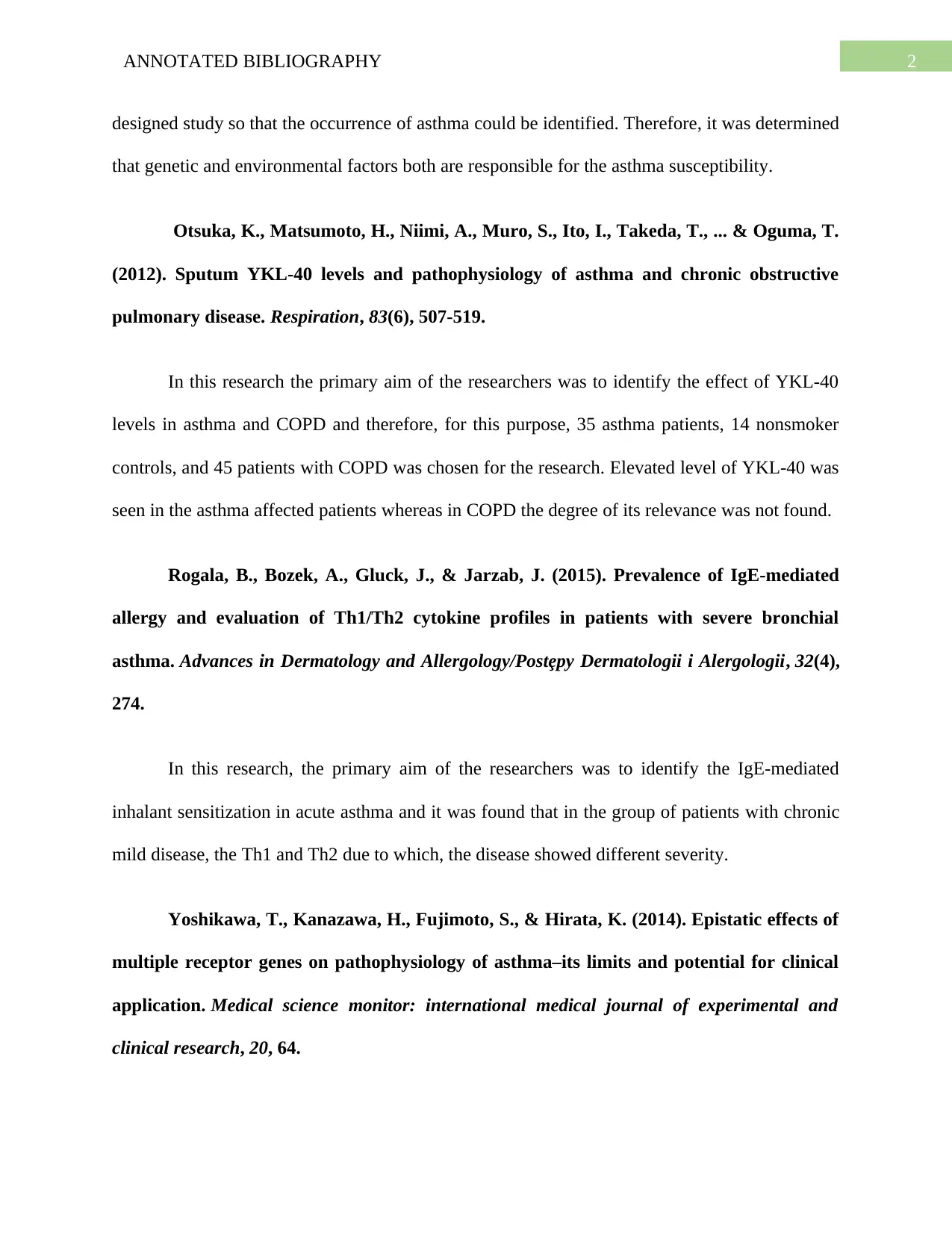Australian Catholic University BIOL122 Annotated Bibliography
VerifiedAdded on 2023/06/04
|4
|655
|397
Practical Assignment
AI Summary
This assignment is an annotated bibliography focusing on asthma research. The document provides summaries of several research papers that explore different aspects of asthma, including its pathophysiology, genetic factors, and the role of various biological markers like YKL-40 and IgE-mediated allergy. The studies cover topics such as the comparison of asthma and COPD, the genetic pathways involved in asthma development, and the identification of internal and external factors contributing to asthma susceptibility. The bibliography includes research on the effects of YKL-40 levels, the prevalence of IgE-mediated allergy, and the evaluation of Th1/Th2 cytokine profiles in patients with severe bronchial asthma. Additionally, the annotated bibliography also discusses the limits and potential of genome-wide association studies in understanding asthma pathophysiology. This assignment aligns with the broader context of a vodcast presentation on asthma or type II diabetes mellitus, as part of the BIOL122 course at Australian Catholic University.
1 out of 4










![[object Object]](/_next/static/media/star-bottom.7253800d.svg)